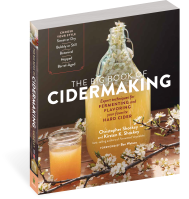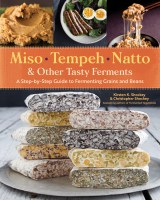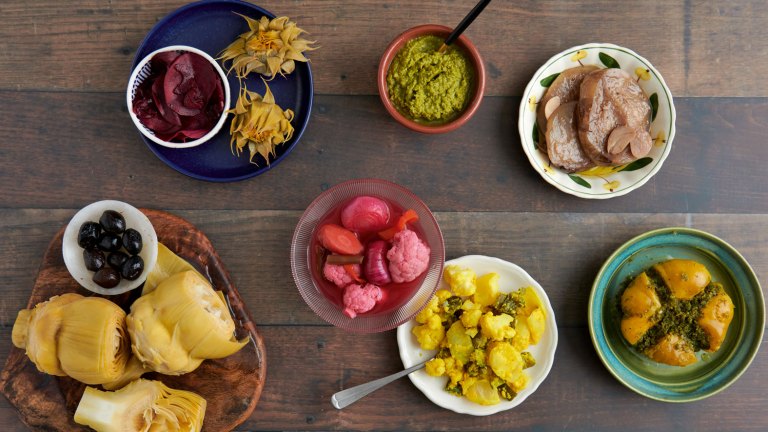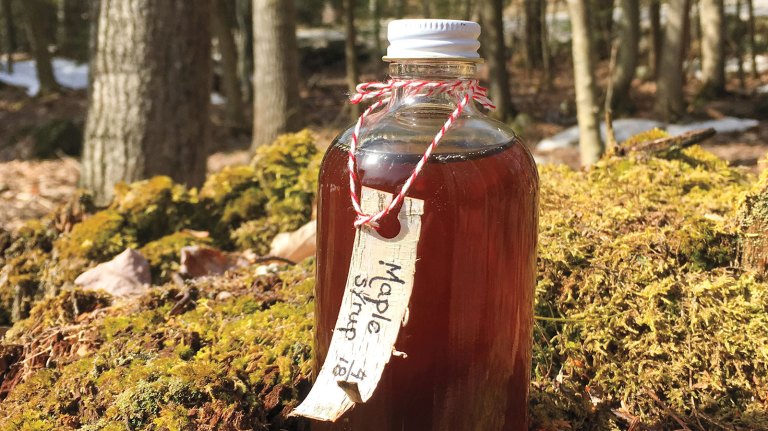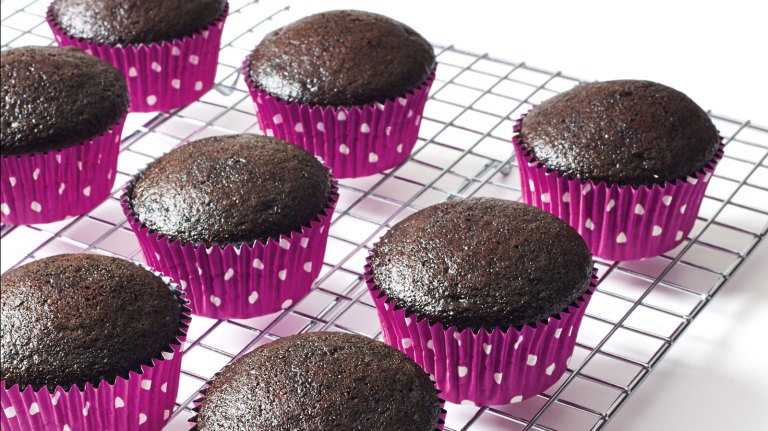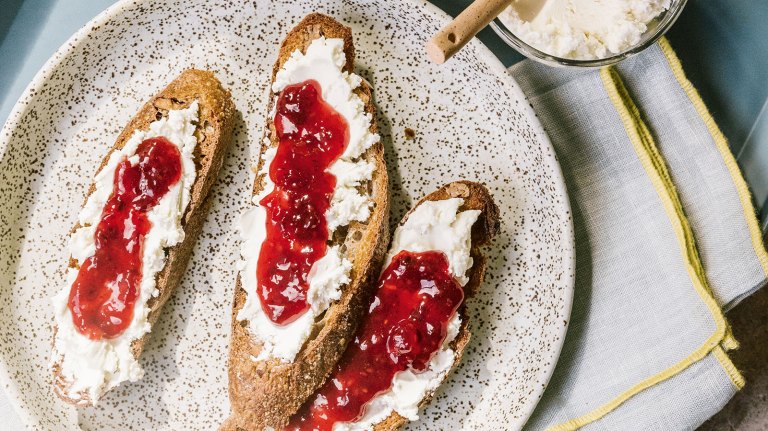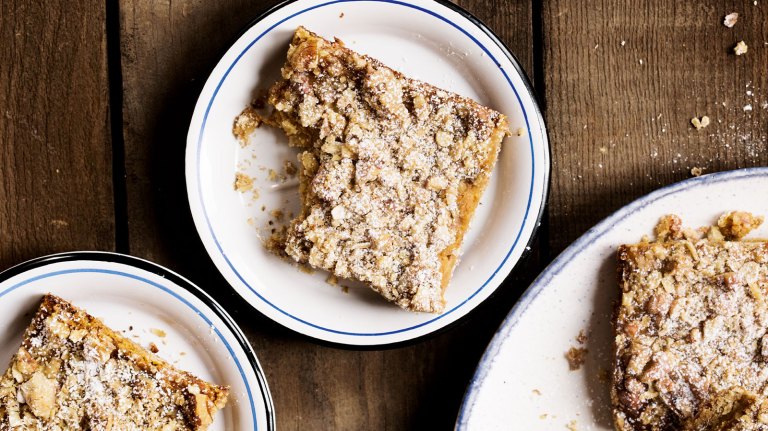Universal Scrap Vinegar
Brew your own uniquely acidic and flavorful vinegars using fruit peelings, pits, and cores that would otherwise go to waste.
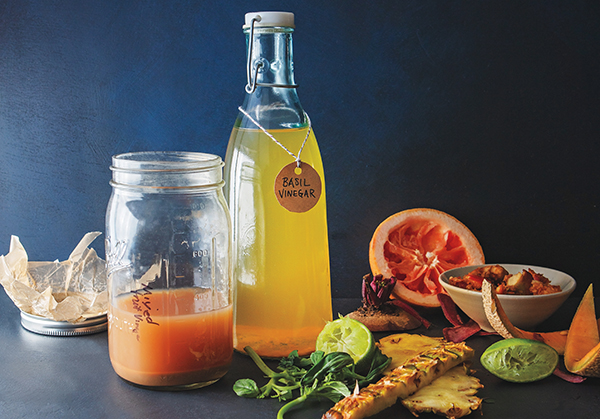
You can use any fruit scraps you like with this recipe: strawberry hulls that have been topped with a bit of fruit; cherry pits that have gone through pitting but still retain a lot of juicy fruit bits; the mashed steamed skins and such that come from a steam juicer; the mash after running fruit through a food mill; the fiber that comes out of your juicer after making apple, beet, or ginger juice; or tiny, seedy wild rose hips. You get the idea. Besides flavor, the skins and bits of fruit often provide wild yeasts as well as nutrients for any yeast you use. If you are using organic skins and peelings, feel free to omit the added yeast. Like the pomace left from pressing apples, though, scrap vinegar often needs to be fortified with a sugar source.
The amount of scrap material called for in this recipe may seem unattainable at first glance. Don’t worry: You can collect and store scraps in the freezer until you have enough. I like to use closer to a pound, but there is a lot of leeway. Use what you can gather, and combine ingredients that seem like they’d be tasty together. This recipe yields about 2 quarts of vinegar.
Ingredients:
- ½–1 pound (225–450 g) fruit/vegetable skins, cores, leftover mash from straining, or basically anything left from a fruit or vegetable project
- ¾ cup (155 g) sugar, any kind
- 1½ quarts (1.4 L) unchlorinated water, just off the boil
Optional:
- ½ teaspoon (1 g) wine yeast hydrated in ¼ cup (59 mL) unchlorinated water that has been warmed to 104°F/40°C; or ½ cup (118 mL) room-temperature wild yeast starter
- ¾ cup (177 mL) raw, unfiltered, unpasteurized vinegar, or a vinegar mother
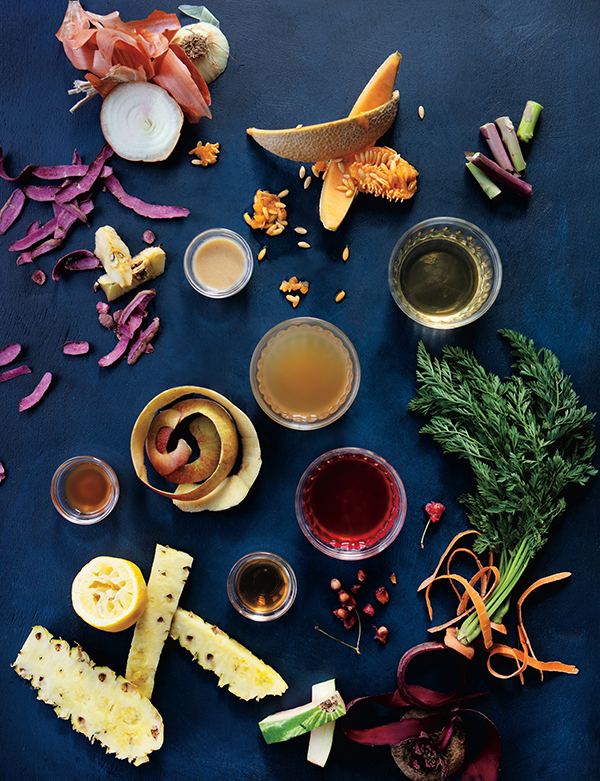
Directions:
- Combine the fruit and sugar in a sanitized half-gallon jar. Stir in 1 quart of the just-boiled water. Use the remaining water to fill the jar to the neck.
- Let the mixture cool to room temperature, then add the vinegar and yeast (if using).
- Stir well with a wooden spoon. You want to get some oxygen in the mix. However, make sure the fruit scraps themselves stay submerged; otherwise they can become a host for undesirable opportunistic bacteria.
- Cover the jar with a piece of unbleached cotton (butter muslin or tightly woven cheesecloth), or a basket-style paper coffee filter. Secure with a string, a rubber band, or a threaded metal canning band. This is to keep out fruit flies.
- Place on your counter or in another spot that is 75° to 86°F/25° to 30°C.
- Stir once a day with a wooden spoon for the first 5 or 6 days, then stir now and then, if you remember. You may see bubbles: That is good.
- The ferment will begin to slow down in about 2 weeks, at which point it is time to take out the scraps. When you remove the cover, you may see a film developing on top. It is the beginning of the vinegar mother. Remove and set it aside while you’re straining out the fruit solids.
- Transfer the almost-vinegar (and the vinegar mother, if you have one) to a clean jar and cover again.
- Check the vinegar in a month, when you should have nice acidity. However, it may take another month or two to fully develop. Test the pH: it should be 4.0 or below.
- Bottle the finished vinegar, saving the mother for another batch or sharing with a friend. Use immediately, or age to allow it to mellow and develop flavors.
Excerpted from Homebrewed Vinegar © by Kirsten K. Shockey.



